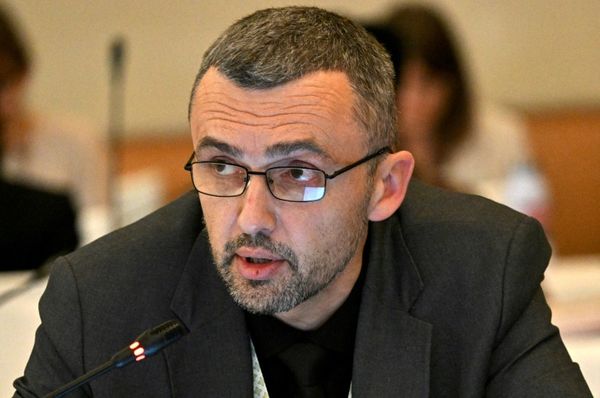
This is part two in a two-part series on the worldwide problem of how to best care for our elderly. Read part one here.
With the world facing an aged care worker shortage, a variety of solutions are being advanced to fill the growing gap between the care needs of Western seniors and the available workforce.
Migration
The developed world already heavily relies on migrant labour in its aged care systems, whether formally or informally through irregular at-home work in countries like Germany and Italy (and the United States, where Latin American migrants are used extensively in informal caring).
On average around 20% of the aged care workforce in OECD countries was from another country in 2016. In Australia, the figure was around 35% before the pandemic, although border closures may have reduced that. Foreign-born workers are more likely to be in residential care than home care roles; 85% are female, like the overall industry. They are also more likely to have formal qualifications than local aged care workers.
Globally, demand for aged care workers is expected to double over the coming decades if current staff-client ratios are to be maintained. If there are productivity improvements, that’s expected to be lower, but it still represents demand for over 13 million extra workers. Meanwhile the care workforce is, in many countries, itself ageing, though less so in Australia; the 2020 aged care workforce census found our own workforce age profile had fallen.
India and the Philippines are the two major sources of migrant labour from non-English speaking countries in Australia. The UK also draws heavily on Indian care workers; the United States draws large numbers of Filipino care workers, but also relies on over two million Hispanic care workers.
European countries are able to draw on workers from middle-income eastern European neighbours. As a successful multicultural nation with a long history of migration, Australia is very well placed to compete against countries such as Japan and China, with minimal histories of large scale immigration. Against that, however, we already rely heavily on foreign care workers not just in the aged care system but in our health system as well. The seniors of the 2030s should expect that those looking after them, from specialist doctors down to personal care workers, may increasingly be majority foreign-born.
Migration strips source countries of talent, but on the positive side remittances from workers in developed countries are a crucial source of income for lower income countries. As global competition for care workers hots up still further, the ageing of countries like the Philippines and Vietnam will increasingly become an issue limiting the availability of workers.
Family
American seniors faced with a severe shortage of care workers have few options — entry into nursing homes, or moving in with their adult children. This in turn places often heavy burdens on family members to provide care. Between 2015 and 2020, the number of caregivers to senior Americans increased by over seven million, or around 2.5%. The prevalence of Americans providing care to multiple family members also increased significantly.
While this is partly people — mainly women — recognising now that they have long been playing a caregiving role and should be recognised for that, it has mainly been driven both by carer workforce shortages and increasing efforts by governments to care for seniors at home.
This is a colossal, poorly analysed area of economic activity that is excluded from most economic models: the EU estimates informal care of elderly people and adults with disabilities could be 2.5% of GDP.
But in many countries demographics and economics work against care by family. As female workforce participation has increased, women (who bear a wildly disproportionate burden of family care — 72% in Australia) are pressured to do two jobs — carer and paid work — leading to breakdowns, mental health problems and burnout. In countries like Japan and Italy, at the pointy end of the increasingly steep shrinking population curve in the West, there are frequently no children to provide care.
Technology and innovation
Spruikers of new technological and digital elder aids can sound like they’re promoting gimmicks: belt-borne airbags to cushion falls, “smart floors” that can detect imminent falls. There’s also increased use of telehealth and the outsourcing to seniors and families of simple medical procedures like taking blood pressure using apps — all with the goal of reducing the call on professional caring and health services.
The Economist has written of an effort in the Netherlands to obtain the benefits of residential care — the clustering of seniors to make service provision easier, while encouraging communal support — while seniors remain at home. Whatever the economic consequences of that model, it provides greater empowerment to seniors, who need to be active partners in decision-making, rather than a problem to be solved.
Robots
The ultimate technosolutionism for the aged care workforce shortage is robot caring. In Japan (inevitably), the aged care insurance scheme has included a growing number of robotic technologies since 2016 — but even the Japanese regard caring as human work, not for automatons.
A number of robots are available in Australia to perform relatively simple tasks (picking things up, for example); despite the availability of interactive robots designed to engage with dementia sufferers, the question becomes whether the crucial affective component of caregiving can ever be provided by robots. Moreover, any networked device can potentially be hacked, raising privacy and even safety concerns.
Paying aged care workers more
There’s solid evidence that paying aged care workers more — especially nurses — lifts carer-client ratios and improves overall quality of care. France — one of the few countries to maintain and increase the ratio of carers to elderly — last year lifted the minimum wage for care workers to €22 an hour. Aged care workers here will eventually receive a substantial pay rise from the current (too slow) Fair Work Commission work value case. The Biden administration has sought to lift pay and improve conditions in the US aged care systems.
Across the world, care work is characterised by low pay, informal or irregular work status, precarity and shiftwork, all of which deter people from pursuing care work, and encouraging qualified nurses to prefer health systems. Amid all the solutions on offer, the most effective one has been staring us in the face all along.
Have you or someone you care about been affected by the aged care workforce crisis? Can you see any viable solutions? Let us know by writing to letters@crikey.com.au. Please include your full name to be considered for publication. We reserve the right to edit for length and clarity.







